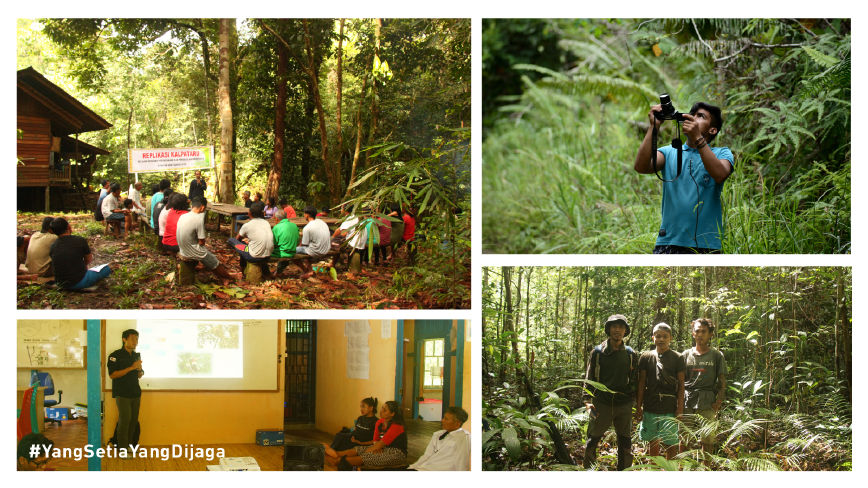

Rangkong Indonesia is one of the conservation units under the auspices of the Rekam Nusantara Foundation. It is a non-profit organization that focuses on voicing various environmental issues that exist in Indonesia with wealth in it. The Indonesian hornbill was formed to carry out various efforts to save the endemic birds of Kalimantan. Charismatic bird known as "The Forest Farmer".
This long-beaked bird has a very important role in maintaining the balance of tropical rainforest ecosystems. Every day, it flies around the forest and spreads grain to various directions. Within a day, the seeds he stocked were so many.
The seeds he stocked, in the end became the forerunners of the growth of trees that produce clean air. The air we breathe every second. The shady trees also protect us from the threat of global warming.
But over time, the bird that became the mascot of West Kalimantan province is endangered. He can no longer fly as freely as before. Frequent hunting, the illegal trade in this bird also continues to occur. Even the trees where he nests are cut down a lot because land use change continues to occur. No doubt, even hornbills that have nested, often fail. Meanwhile, the availability of feed in their habitat is also decreasing.
This also causes the population to decrease in a very fast time. If you look at his status in 2011, he falls into the category of almost threatened. But in 2015, his status changed to critical. The government also designated these animals on the protected list. The IUCN calls the ivory hornbill (Rhinoplax vigil) Critically Endangered (CR) status, only one more stage to extinction.
Of the 13 types of hornbills that exist, eight of them live in Kalimantan. They include ivory hornbills, crested hornbills, hornbills, klihingan hornbills, black-crested hornbills, golden hornbills, black-tailed kale and white-bellied kangkareng. Similar to ivory hornbills, all of these types of hornbills are also in a threatened condition.
This condition certainly cannot be left alone. Without rescue efforts as much as possible, the ivory hornbill might only be a picture in the mascot of West Kalimantan province. Our children and grandchildren, probably won't be able to see the forest farmer's bird flying freely in person.
For this reason, we are trying to save hornbills and their habitats. We have now identified 20 feed trees and nests that need to be rescued as carefully as possible. We packed the tree rescue through a donation program for feed trees and hornbill nests. Saving these poho-trees, means also saving hornbills from the threat of extinction.Through this program, we hope to save hornbills from the loss of nest trees and the destruction of their habitat. So that the nest and its feed will always be there. In order to make the program a success, we need financial support of Rp.50 million.
Of the total allocation of funds, IDR 40 million will be used for operations in maintaining the twenty nest trees and existing feed. The rician is Rp.2 million per tree. The funds are used for logistics, consumption, transportation, honorarium of champions, as well as the owners of the land where the tree lives. Meanwhile, the remaining IDR 10 million will be used for training and surveys with the surrounding community.
This program will be run for three months, according to the cycle of the banyan tree that becomes the hornbill nest. Some of the communities around us are involved as champions to jointly guard these trees. Previously, they had also been given training to observe the development of hornbills, nests and feed. The surrounding community also benefits directly from this program.
Through this program, we hope that hornbills and their habitats can remain sustainable. Free from various threats of hunting, felling of nest trees and their feed. So that he can still fly freely spreading the seeds of life. Spreading the seeds of trees that are very beneficial to all of us.
The support of all colleagues, regardless of the nominal, will certainly be very useful in order to save the charismatic bird. So that our children and grandchildren in the future, not only know the hornbill through pictures. But it can also watch directly the bird fly freely, scattering the seeds of life.
In the end, efforts to care for the forest farmer require the role and collaboration of all parties. Maintaining its sustainability, while also keeping the forest sustainable. Let's together take care of the forest farmer still flying spreading the seeds of life.
To save the hornbill, is to save the forest anyway. Keeping the air clean. Protecting this nature from the threat of global warming.